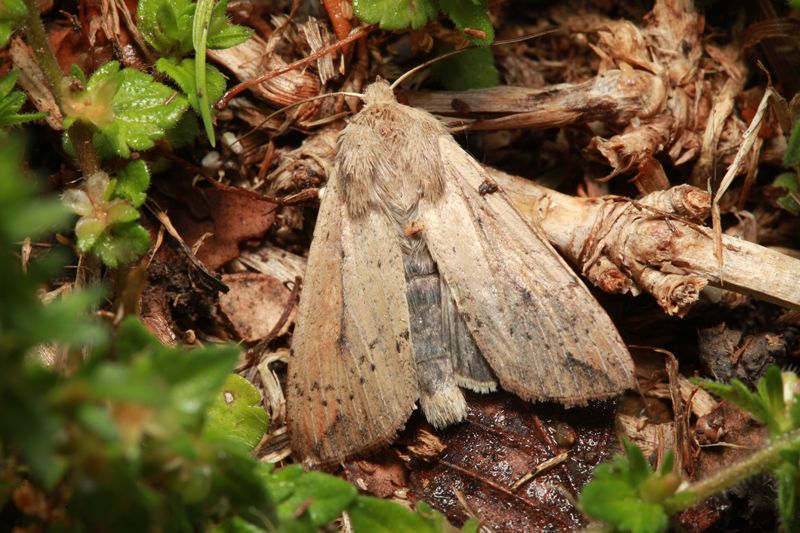
Armyworm moths are about an inch long with a 2-inch wingspan. The front wing in tan and mostly plain, often with a white spot in the middle. This moth was hiding in the grass in my back yard.
Whenever there’s a slightly unusual weather pattern I can predict the calls.
“So what’s the mild weather going to do to the pests?” “Did the cold snap in January kill all the bugs?” “Will all this rain mean more insects?”
The truth is that most Texas insects are pretty well adapted to our coldest weather, and also darned difficult to predict. Sometimes entomologists will venture a guess for a reporter, and might even be right more often than not. I’ve learned, however, to be a little more circumspect in my predictions.
Indeed, in the past few weeks I’ve given a few television and newspaper interviews about the mild winter. So far, I’ve been willing to go on record predicting an early start to the insect season, but I am still hedging my bets on longer term predictions. So much can happen and, frankly, there are not that many insects that entomologists have studied long and carefully enough to make accurate seasonal predictions. On average I think the Weather Service is better than us insect experts at predicting the future; but I still don’t put too much stock in long-term weather forecasts.
Well, at last there may be an insect to satisfy the media’s desire for a good “plague” to report. It’s called the true armyworm, and there have lots of them fluttering about the past couple of weeks in north Texas. And it’s not just farmers who are seeing them this year. True armyworm moths seem to be uncommonly abundant in towns and cities, at least in my part of north Dallas.
Armyworm moths can now be seen flying about city streets, fluttering around porch lights and hiding in lawns and bushes. But the moths are not the problem–it’s their children. Armyworm moths lay eggs that turn into armyworm caterpillars. And armyworm caterpillars feed on grasses, including a lot of valuable crops like wheat.
According to my colleague Dr. Allen Knutson, it’s not normal to see armyworms this early in the year. Armyworms are normally killed by freezing weather, and in usual years only make into north Texas farmers’ fields in mid-April or so, after flying from points south of San Antonio or Corpus Christi.
“The moths I’m seeing right now in the Dallas area are in pristine condition,” Knutson said. “This suggests that these moths most likely came from locally raised caterpillars.” Moths that travel long distances usually have worn wings, and show the effects of travel.
Armyworms get their name from the gregarious behavior of the nearly full-grown caterpillars. In years of abundance they are known to form large bands or “armies” of caterpillars munching their ways through prairies, farm fields, and even lawns.
County extension entomologists in north Texas have not yet reported any major armyworm outbreaks this year, but they are on the lookout. Especially because this year looks like one of the best wheat crops in decades in some areas. And even the remote chance of armyworm hoardes is enough to put farmers on edge.
Homeowners who see the large, tan moths in their yards should not be too concerned, however. While armyworms can damage grass in lawns, they are more likely to build up large numbers in pastures or farm fields and then move into adjacent turfgrass. Homes on the edges of undeveloped land or wheat fields would be most at risk, should the caterpillars flourish over the next few weeks. Right now, however, these moths are more of a curiosity and a reminder of the forces of nature that are so difficult for us humans to predict and control.
I could predict a big year for armyworm outbreaks, but I won’t. Mother Nature is too unpredictable.
For more information about armyworms, click here.